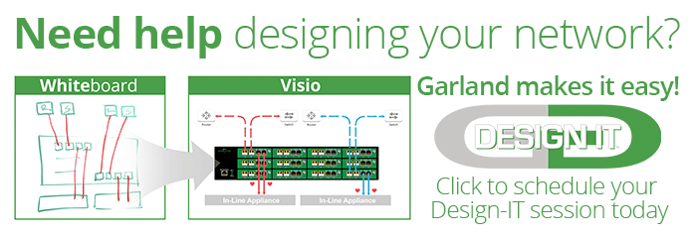

“Network outages can cost financial institutes up to $60k for 30 minutes of downtime.”
I was just speaking to a long time customer of ours that divulged this to me when discussing their upcoming network connectivity needs. As a financial institution their network details are confidential, but the scenario is a common one that I was approved to share with you.
The customer was explaining to me that the cost of a bypass TAP is insignificant when compared to the prospect of network downtime that results in thousands of dollars per minute. Actually here’s an exact quote:
“In our case, the potential for downtime is not an option, so any in-line tool is deployed with an external bypass switch, and that has nearly eliminated outages due to security infrastructure hardware failures.”
Read more about this financial services problem resolution process.
“We had a situation where our SSL and SSH were not working. Nor was Port 80 or Port 443. It was a nightmare and after literally spending days looking into the issue we brought in an expert. With a bypass TAP the expert was able to bypass the DDoS and then the IPS. The magic started when we bypassed the IPS and everything started working properly again.”
Once they used the bypass mode to determine where the problem was in the network, they were able to quickly resolve the issue. The company now also has a new problem resolution process, that includes:
For sometime now, bypass TAPs have been part of this customer’s network architecture.
The main reason, “Because the cost of network outages make the cost of a simple bypass tap insignificant. To reduce our network downtime by even 5 seconds authorizes me to deploy bypass TAPs for all of our in-line security tools."
To learn more about how bypass TAPs can reduce your network downtime and increase the lifecycle of your in-line appliances, contact me or a member of our network design team.

If the inline security tool goes off-line, the TAP will bypass the tool and automatically keep the link flowing. The Bypass TAP does this by sending heartbeat packets to the inline security tool. As long as the inline security tool is on-line, the heartbeat packets will be returned to the TAP, and the link traffic will continue to flow through the inline security tool.
If the heartbeat packets are not returned to the TAP (indicating that the inline security tool has gone off-line), the TAP will automatically 'bypass' the inline security tool and keep the link traffic flowing. The TAP also removes the heartbeat packets before sending the network traffic back onto the critical link.
While the TAP is in bypass mode, it continues to send heartbeat packets out to the inline security tool so that once the tool is back on-line, it will begin returning the heartbeat packets back to the TAP indicating that the tool is ready to go back to work. The TAP will then direct the network traffic back through the inline security tool along with the heartbeat packets placing the tool back inline.
Some of you may have noticed a flaw in the logic behind this solution! You say, “What if the TAP should fail because it is also in-line? Then the link will also fail!” The TAP would now be considered a point of failure. That is a good catch – but in our blog on Bypass vs. Failsafe, I explained that if a TAP were to fail or lose power, it must provide failsafe protection to the link it is attached to. So our network TAP will go into Failsafe mode keeping the link flowing.
Single point of failure: a risk to an IT network if one part of the system brings down a larger part of the entire system.
Heartbeat packet: a soft detection technology that monitors the health of inline appliances. Read the heartbeat packet blog here.
Critical link: the connection between two or more network devices or appliances that if the connection fails then the network is disrupted.